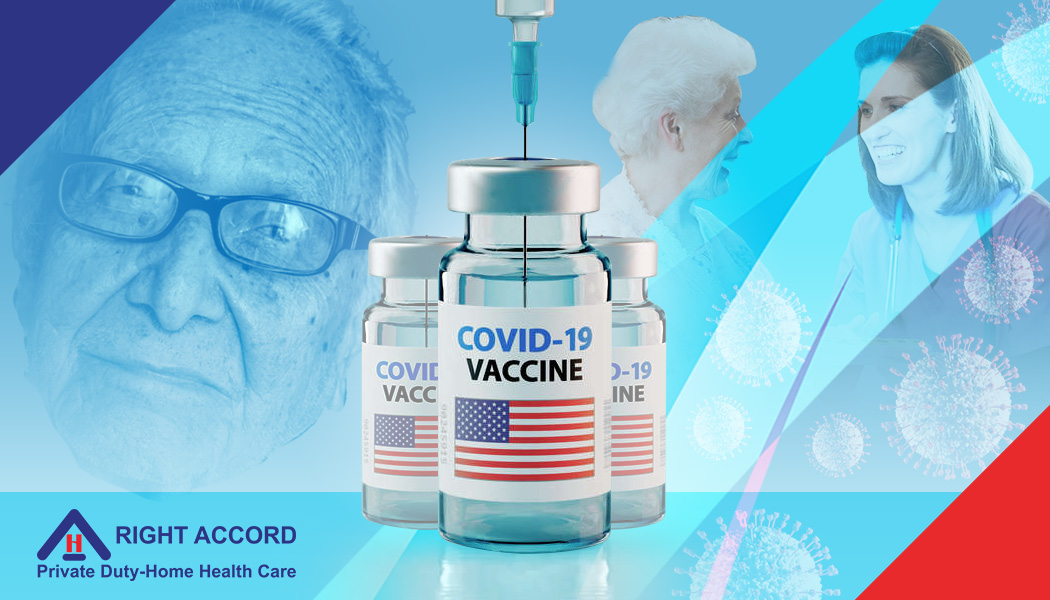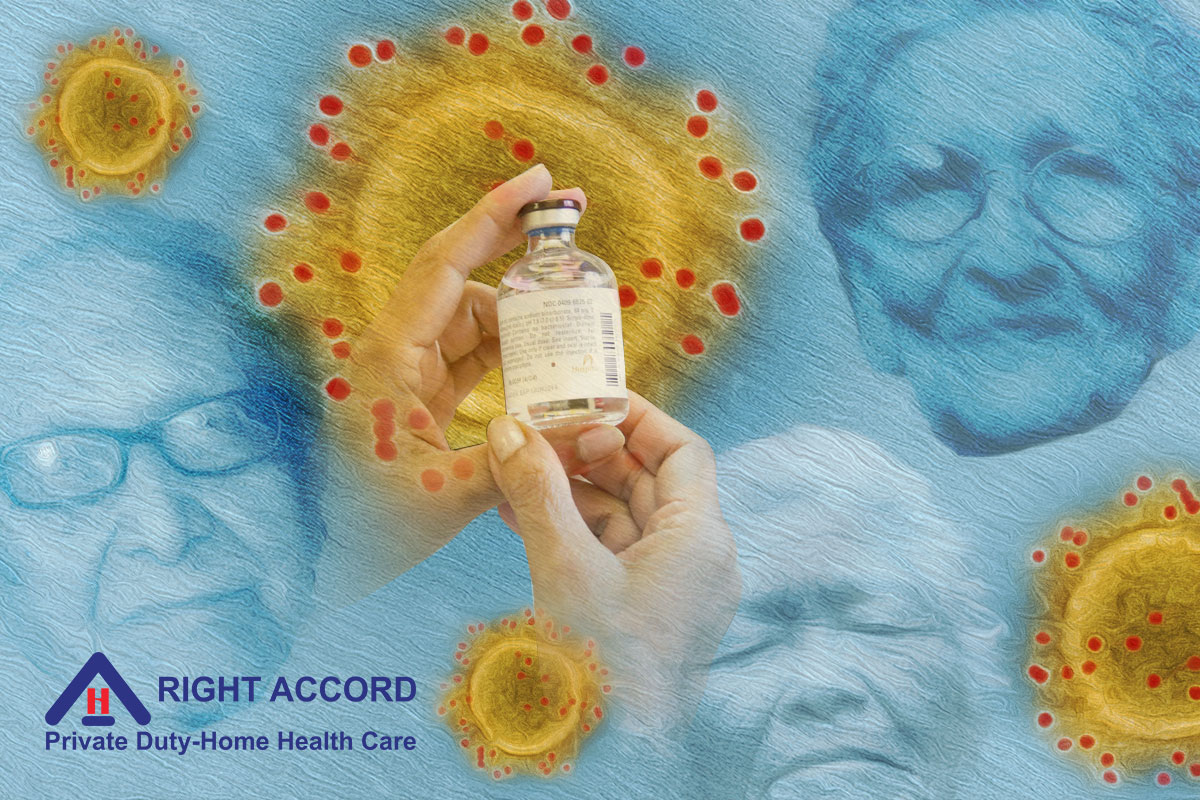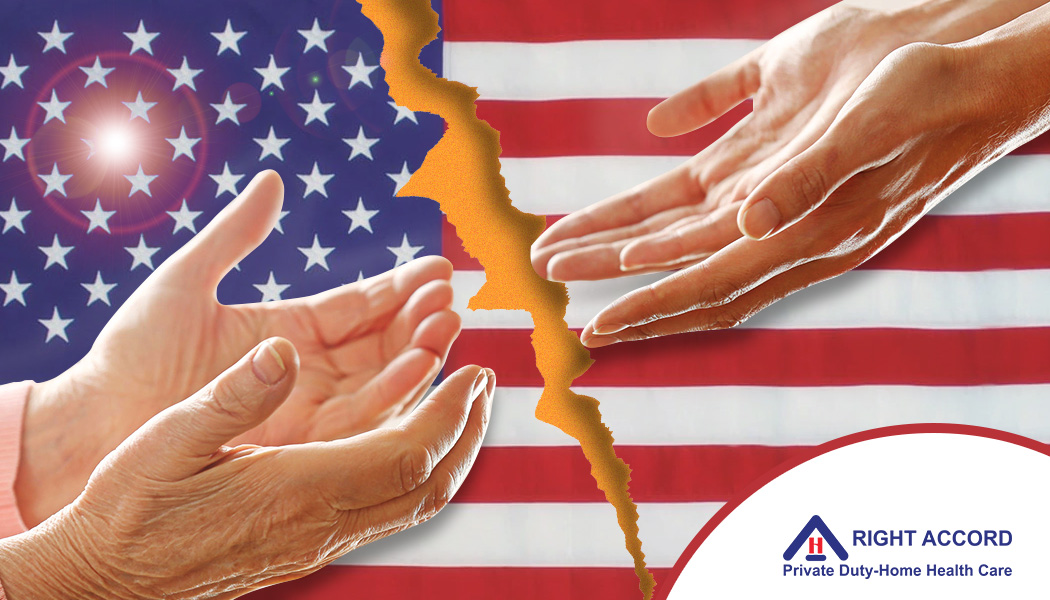· 23 min read
How to Care and Protect your Elderly Parent from COVID-19
Updated May 2021 - Protect your elderly parent from COVID-19. Know about its symptom, treatment, vaccine and prevention to keep your elderly safe.
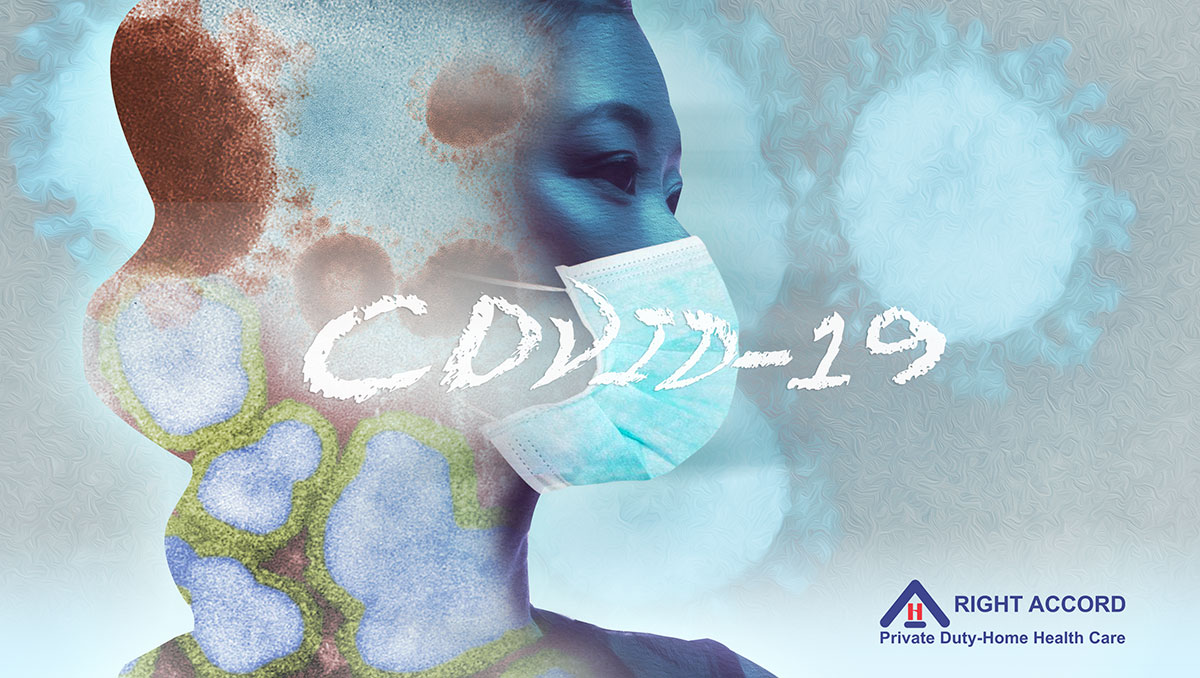
COVID-19 Pandemic Edition
By: Rosemarie Tamunday Casanova - Updated May 2021
The start of 2020 marks an alarming concern to the global health community when the dreaded COVID-19 outbreak that was first reported from Wuhan, China has now become a pandemic and spread so far to at least 212 countries and territories. As of today, the strain of coronavirus has infected over 158 million people worldwide, resulting in 3,287,082 deaths(WHO report as of May 2021). Included of those heavily affected are the seniors and elderly people. Some of them are living in-home, with their family members, while others are staying in the assisted facilities and nursing cares.
Health experts believe that COVID-19 is milder than SARS (Severe Acute Respiratory Syndrome), which also identified in China in 2003 and has so far reported 8,098 cases and claimed 774 lives in 26 countries. And MERS (Middle East Respiratory Syndrome), which was occured in Saudi Arabia in 2012 affecting 27 countries across the globe and recorded 2,519 cases and 866 total deaths.
SARS and MERS have a significantly higher fatality rates case than COVID-19 however, COVID-19 is more infectious and transmits faster from person to person, leading to greater case numbers. And yet, despite the lower case of fatality rate, the total number of deaths from COVID-19 which now rose to around 3,287,082 worldwide far outweights that from SARS and MERS.
So it is appropriate to be continuously vigilant because until now we do not know completely enough about its true potential, like how deadly the disease is, how best to treat those who get sick, and how to stop it from spreading.

Photo From Wikimedia Commons, the free media repository
WHAT IS COVID-19?
According to the U.S. Department of Health and Human Services/Centers for Disease Control and Prevention (CDC), COVID-19 is a virus (more specifically, a coronavirus) identified as the cause of an outbreak of respiratory illness first detected in Wuhan, China.
COVID-19 has been traced to the Huanan Seafood Market in Wuhan, which is known for selling wild animals. Much like other coronaviruses, the Wuhan strain was likely spread from the animals to humans, where the highly contagious illness quickly spread. However, a growing number of patients reportedly have not had exposure to animal markets, suggesting person-to-person spread is occurring. At this time, it’s unclear how easily or sustainably this virus is spreading between people.
Experts say that it causes an upper respiratory infection and pneumonia, an inflammation of the lungs, which can range from moderate to severe.
CAUSES
On 31 December 2019, the World Health Organization (WHO) was alerted to several cases of pneumonia in Wuhan City, Hubei Province of China. The virus did not match any other known virus. This raised concern because when a virus is new, we do not know how it affects people.
One week later, on 7 January, Chinese authorities confirmed that they had identified a new virus. The new virus is a coronavirus, which is a family of viruses that include the common cold, and viruses such as SARS and MERS. This new virus was temporarily named “2019-nCoV.” In February 2020, WHO officially named the strain of coronavirus that has infected over 43,000 people worldwide, as “COVID-19”.
“Under agreed guidelines between WHO, the @OIEAnimalHealth & @FAO, we had to find a name that did not refer to a geographical location, an animal, an individual or group of people, and which is also pronounceable and related to the disease,” said Dr Tedros Adhanom Ghebreyesus, Director-General of the WHO.
Public health officials and partners are working hard to identify the source of the COVID-19. Coronaviruses are a large family of viruses, some causing illness in people and others that circulate among animals, including camels, cats, and bats.
Droplets from coughing and sneezing and close human contact likely transmit the coronavirus. The respiratory droplets are probably absorbed into the body through the mucous membranes of the mouth, nose, and eyes. The virus is likely to remain active in the environment for several days.

Photo From Wikimedia Commons, the free media repository
This could be through:
- Hugging and kissing
- Sharing utensils for eating and drinking
- Speaking to someone within a distance of 3 feet
- Touching someone directly
- A person with the virus can spread the infection by leaving respiratory droplets on objects, such as door handles, doorbells, and telephones. These are then picked up by someone else.
SYMPTOMS
According to the Centers for Disease Control, a person could be at risk if they have:
Fever and symptoms of lower respiratory illness, such as coughing or difficulty breathing, after traveling to Wuhan and other affected countries or having close contact with someone who was ill and is now under investigation for the virus in the past two weeks.
Fever or symptoms of lower respiratory illness after having close contact in the past two weeks with someone who’s been confirmed to have the virus.
Most cases of COVID-19 begin with a high fever. Other early symptoms include those common to flu, such as aches, chills, diarrhea, dry coughing, and shortness of breath. These will develop over a week. Patients may go on to develop pneumonia, an infection of the lungs.
Serious complications, such as respiratory failure, heart failure, and liver failure may occur. These complications are more likely in people aged over 60 years, and those with pre-existing co-morbidities, such as diabetes or hepatitis.
The Centers for Disease Control and Prevention’s Mortality and Morbidity Weekly Report revealed that “typical symptoms” such as fever, shortness of breath and chest pain are some prominent symptoms. These symptoms were more likely to occur concurrently in more serious cases, with 68 percent of hospitalized patients experiencing all three.
They also found out that age plays a significant role in the prevalence of these symptoms. The study indicated that reports of fever, shortness of breath and chest pain occurring simultaneously increased according to the person’s age. Thirty-eight percent of those aged 18 to 44 experienced all three symptoms, compared to 48 percent of those aged 45 to 64, and 56 percent of those 65 and older.
Gastrointestinal symptoms are also a factor. Although COVID-19 is believed to be purely a respiratory illness, some patients reported were also manifesting gastrointestinal symptoms — most commonly diarrhea and least commonly nausea.
Additional Symptoms
CDC has expanded its list of coronavirus symptoms, adding more indicators such as the following:
Muscle pain
Headache
Repeated shaking with chills
Sore throat
New loss of smell or taste
Muscle pain, headache and chills were also frequent. On top of the more typical symptoms of the virus, the CDC’s report showed that many with symptomatic COVID-19 experienced generalized symptoms that can sometimes be mistaken for other illnesses. Sixty-three percent reported experiencing myalgia (muscle pain), another 63 percent had chills, 62 percent had sore throats and 59 percent experienced headaches.
A notable addition to the list is a “new loss of taste or smell,” something that health experts have suspected to be an early symptom for some time now. However, they associated the loss of taste and smell with some milder cases. According to them, those who experienced these symptoms were less likely to be hospitalized.
The CDC pointed out that the list is not all inclusive and just because you have any of the above symptoms, it doesn’t necessarily mean you have the coronavirus. Or because you don’t have cough or fever, you don’t have the virus either. Still, the best thing to do if you feel ill, or experiencing any of the above symptoms, is to immediately call your trusted health providers.
It’s also important to note that COVID-19 virus can spread asymptomatically, meaning that significant number of individuals are carrying the virus without being aware of it, likely explaining much of the disease’s rapid global spread.
DIAGNOSIS
Making a clinical diagnosis of respiratory viral illness for elderly patients poses a challenge. The clinical picture is much more blurred in comparison to the typical upper respiratory infection, seen in children and young adults.
Among elderly patients, the respiratory viral illness may accompany symptoms of lower respiratory tract involvement, pulmonary and cardiac failure, and nonspecific or atypical symptoms such as confusion, anorexia, dizziness, falls and lack of fever. Finally, some elderly may also be unable to articulate their symptoms clearly, something they have in common with infants.
If you believe that you are at higher risk for serious illness from COVID-19 because of your age or because you have a serious long-term health problem, it is extra important for you to take actions to reduce your risk of getting sick with the disease.

From Wikimedia Commons, the free media repository
PREVENTION AND CONTROL
In medicine, the saying “an ounce of prevention is worth a pound of cure” holds true and can save you money and your life. In this case, it all starts by observing safety measures to help restrict the spread of the virus.
WHO’s standard recommendations for the general public to reduce exposure to and transmission of a range of illnesses are as follows, which include hand and respiratory hygiene, and safe food practices:
- Frequently clean hands by using alcohol-based hand rub or soap and water.
- Avoiding touching the eyes, mouth or nose with unclean hands.
- When coughing and sneezing cover mouth and nose with flexed elbow or tissue – throw the tissue away immediately and wash hands.
- Avoid close contact with anyone who has a fever and cough.
- Observe social distancing(at least 3 feet apart) if you went outside.
- If you have a fever, cough and difficulty breathing seek medical care early and share previous travel history with your health care provider.
- When visiting live markets in areas currently experiencing cases of a novel coronavirus, avoid direct unprotected contact with life animals and surfaces in contact with animals.
- The consumption of raw or undercooked animal products should be avoided. Raw meat, milk or animal organs should be handled with care, to avoid cross-contamination with uncooked foods.
If you are at higher risk of getting very sick from COVID-19, CDC suggests that you should:
- Stock up on supplies.
- Take everyday precautions to keep space between yourself and others.
- When you go out in public, keep away from others who are sick, limit close contact and wash your hands often.
- Avoid crowds as much as possible.
- Avoid cruise travel and non-essential air travel.
- During a COVID-19 outbreak in your community, stay home as much as possible to further reduce your risk of being exposed.
DRUG TREATMENT
There is no specific antiviral treatment recommended for COVID-19 infection. People infected with COVID-19 should receive supportive care to help relieve symptoms. Specialist infectious disease teams will isolate people with symptoms of coronavirus. They will provide supportive medical care to treat any symptoms.
There are still no drugs or biologics that have been proved effective for the treatment of this new coronavirus disease. Investigation of several anti-virals, immunotherapeutic agents and vaccines are continuing to develop an effective therapy for the COVID-19 treatment to date. However, there are some positive indications from scientists and health experts around the globe in an effort to come up with the best treatment for COVID-19 before the year ends.
Antiviral Agents
Remdesivir
Remdesivir is an agent of the antiviral family act as a nucleotide analog prodrug. Its efficacy is observed against other types of human coronavirus including severe acute respiratory syndrome coronavirus (SARS-CoV) in 2013 while in 2012 against MERS-CoV. Remdesivir is in phase 3 of clinical trials for action against coronavirus. Remdesivir is considering more effective than the combination of lopinavir and ritonavir because of its therapeutic activity. It treats lung pathology in mice by decreasing viral load and improves lung function while lopinavir/ritonavir combination only improves the function of the pulmonary system.
Lopinavir/Ritonavir
Studies show the effectivity of lopinavir/ritonavir combination when giving along with IFNb in mice infected with MERS-CoV.
Other Investigational Antivirals
Rintatolimod, Azvudine, Grazoprevir, Piltidepsin, Favipiravir are the drugs of antivirals are testing for the treatment of coronavirus.
Rinatatolimod, a broad spectrum anti-viral, is a toll-like receptor 3 agonists tested in Japan for the action against COVID-19.
From Spain in vitro studies shows the efficacy of piltidepsin, a didemnins, by targeting EF1A. EF1A is a key component responsible for viral spread and multiplication.
Immunomodulators and Other Investigational Therapies
Interleukin-6 Inhibitors
As mentioned above cytokines storm develops in coronavirus patients caused severe damage to lung tissues. Several inflammatory mediators release including interleukin-6 as a result of coronavirus infection. This inflammatory response leads to the severe illness of the patient with shortness of breath. Interleukin-6 inhibitors can be a better agent to prevent lung damage.
Studies reported about sarilumab, interleukin-6 inhibitor, an agent prevent death, hospitalization, and need for ventilation. According to a study, tocilizumab, another IL-6 inhibitor, is effective for severe cases of coronavirus patients.
Hydroxychloroquine and Chloroquine
Hydroxychloroquine and Chloroquine are the drugs of class antimalarial but also used for autoimmune disease because of having immunomodulatory actions. They are considered as an effective treatment yet, as they are inhibitors of heme polymerase, an enzyme. Wang et al reported that Chloroquine effectively inhibits SARS-CoV-2 in vitro but the effectivity of hydroxychloroquine is more than chloroquine.
Recently, the World Health Organization(WHO) decided to stop the trial research on hydroxychloroquine, an anti-malarial medicine also used to treat lupus and rheumatoid arthritis, as an effective treatment for COVID-19. The decision was made after multiple studies have shown that the drug has no impact on the coronavirus.
WHO concluded that recent findings “showed that hydroxychloroquine does not result in the reduction of mortality of hospitalized COVID-19 patients.”
Hydroxychloroquine became popular as a potential COVID-19 treatment when small studies suggested it might be useful against the virus. But following research and subsequent tests showed that it was not beneficial.
Azithromycin
Azithromycin is an antibacterial agent. A study in France has been done for investigating the effectivity of azithromycin and hydroxychloroquine and found approximately the same results. 100% clearance observed in patients of SARS-CoV-2. These medications cannot be in a broader population due to their side effects of QT prolongation and increased risk of cardiac arrest.
Convalescent Plasma
People who are recovered from coronavirus developed antibodies against coronavirus. The FDA is facilitating access to convalescent plasma, antibody-rich products that are collected from eligible donors who have recovered from COVID-19. This product used in seriously ill persons or a person facing life-threating conditions.
Nitrous Oxide
Nitrous Oxide is a supportive measure for the coronavirus treatment. Inhaled nitrous oxide treat pulmonary hypertension, improves breathing so need pf ventilation decline.
Dexamethasone
Clinical trial results and preliminary findings from the united kingdom (UK) shows that dexamethasone, a corticosteroid, helps to treat patients who are critically ill with COVID-19. Dexamethasone treatment on patients in ventilators shows that it reduce mortality by about one third. For COVID-19 patients requring only oxygen, it cuts the mortality rate by about one fifth. The beneficial effect of this drug was only seen in patients seriously ill with COVID-19, and was not observed in patients with milder disease.
The World Health Organization (WHO) recently commends the contributors of the breakthrough treatment, citing its significant interventions in saving the patient’s life under critical conditions.
“This is the first treatment to be shown to reduce mortality in patients with COVID-19 requiring oxygen or ventilator support,” said Dr Tedros Adhanom Ghebreyesus, WHO Director-General. “This is great news and I congratulate the Government of the UK, the University of Oxford, and the many hospitals and patients in the UK who have contributed to this lifesaving scientific breakthrough.”
Dexamethasone is a steroid that has been used since the 1960s to reduce inflammation in a range of conditions, including inflammatory disorders and certain cancers. It has been listed on the WHO Model List of Essential Medicines since 1977 in multiple formulations, and is currently off-patent and affordably available in most countries. WHO clinical guidance will be updated to reflect how and when the drug should be used in COVID-19.
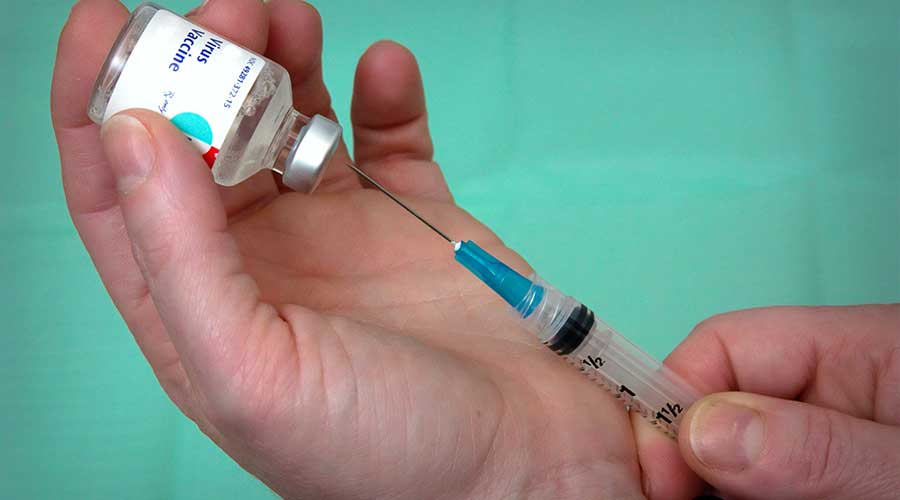
Photo by CDC on Unsplash
THE RACE FOR COVID-19 VACCINE
Several potential vaccines for COVID-19 are now being developed across the globe. At least 23 of the vaccine candidates are already in human trials, others have already been completed their test and is now available for use according to the World Health Organization(WHO). As of April 2021 669,248,795 vaccine doses have already been administered worldwide (WHO). Here are some of the vaccine development companies that came out in the race for COVID-19 vaccine:
Moderna Biotech - Cambridge, Massachusetts USA
In July 2020, biotech firm Moderna released promising data on its vaccine trial. They said that it generated a “robust” immune response to participants.
In the Moderna study, researchers vaccinated monkeys by giving them two shots spaced over four weeks. A month later, they infected the animals with the coronavirus. In some of the vaccinated monkeys, researchers could not detect the virus in the nose or lungs. In others, the virus replicated slowly before disappearing.
Moderna vaccine delivers a genetic material called “messenger RNA” into cells. The cells use the vaccine RNA to produce a protein found on the surface of the coronavirus. It’s called spike protein, which then prompts an immune response.
The American firm is planning to begin human trials of its vaccine by the end of July.
Status Development: Moderna announced in November 2020 that it has finished the first interim analysis of the Phase 3 study for mRNA-1273. Moderna applied for emergency use authorization to the U.S. Food and Drug Administration (USFDA) on November 30 and finally made available to the public in December 2020. According to the company, the study showed that its vaccine has an efficacy rate of 94.5 percent.
Pfizer - New York, USA & BioNTech - Mainz, Germany
Drug giant Pfizer and its partner BioNTech began an advance trial of one of their coronavirus vaccines in the United States.
Pfizer’s coronavirus vaccines prompts the recipient to make antibodies against parts of the virus. Its first vaccine targeted a piece of the spike protein, a structure the virus uses to infect human cells. The second vaccine, moved into advanced trials, targets the entire spike structure.
Both versions of Pfizer’s vaccine elicit antibody responses as well as immune cells called T-cells. If a vaccine activates both arms of the immune system the hope is it will be more effective and provide more durable protection.
In July, Pfizer and BioNTech released preliminary data showing that one of their vaccines appeared safe. It elicited antibody and T-cell immune response in a Phase 1/2 trial.
Status Development: Pfizer and BioNTech completed their Phase 3 study for the vaccine on November 18, 2020. Pfizer’s vaccine showed a 95 percent efficacy rate during its study. Meanwhile, the USFDA on December 12 granted an emergency use authorization for the vaccine, which was used on December 14, 2020 in New York City. In addition, the United Kingdom, the first country in the world to conduct mass immunization against COVID-19 on December 8, 2020, also used the vaccine developed by BioNTech and Pfizer.
Novavax - Gaithersburg, Maryland, USA
Novavax, Inc. is a late-stage biotechnology company developing next-generation vaccines for serious infectious diseases.
They have enrolled their first participants in a Phase 1/2 clinical trial of its coronavirus vaccine candidate, NVX‑CoV2373. It is a stable, prefusion protein made using its proprietary nanoparticle technology.
Novavax identified NVX‑CoV2373 as its lead SARS-CoV-2 candidate following pre-clinical testing. This test demonstrated high immunogenicity and high levels of neutralizing antibodies.
These results provide strong evidence that the vaccine candidate will be highly immunogenic in humans. It is a potential protection from COVID‑19 and thus helping to control the spread of this disease.
Status Development: Novavax said in a statement on November 30, 2020 that it has completed the enrollment of its 15,000-patient Phase 3 trial in the United Kingdom. In addition, the company added that all patients have been enrolled in Phase 2b trials in South Africa. According to the company website, Novavax COVID-19 Vaccine Demonstrates 89.3% Efficacy in the United Kingdom (UK). Novavax also announced successful results of its Phase 2b study conducted in South Africa.
AstraZeneca & the University of Oxford - Cambridge, UK
A potential coronavirus vaccine was developed by Oxford University with pharmaceutical giant AstraZeneca. It has produced a promising immune response in a large, early-stage human trial.
The researchers said the vaccine produced antibodies and killer T-cells to combat the infection. The T-cell response did not increase with a second dose of the vaccine, they said, which is consistent with other vaccines of this kind.
The vaccine was found to be well-tolerated and there were no serious adverse events, according to the researchers. Fatigue and headache were the most commonly reported, they said. Other common side effects included pain at the injection site, muscle ache, chills and a fever.
The team is now running Phase 3 trials in people, which could produce results by October.
Status Development: AstraZeneca and the University of Oxford announced on December 8, 2020 that it finished the Phase 3 interim analysis for the vaccine. The researchers noted that the efficacy rate for two doses – with the first dose at half strength – reached 90 percent. While a combination of two full-strength doses only resulted in 62 percent efficacy.
CanSino Biologics Inc. - Tianjin, China & Sinopharm (Sinovac) - Beijing, China
As the country where the coronavirus outbreak began, China was fast out of the gate in developing vaccines. CanSino’s offering is made from a common-cold virus, tweaked to mimic the coronavirus.
Very recently, Tianjin-based CanSino Biologics published results1 from an early-stage clinical trial. It is showing that its vaccine is safe and can trigger an immune response.
Sinopharm, a state-owned pharmaceutical company in Beijing, is also developing two vaccines. The vaccines are made using particles of the coronavirus that have been inactivated so that they can no longer cause disease. The company said that both vaccines had produced antibodies in all participants in preliminary phase I and II trials.
The speed with which Chinese vaccine-makers are moving has raised hopes around the world. Sinopharm has even promised to have a vaccine ready to distribute by the end of the year.
Status Development: Sinovac by Sinopharm has been approved for emergency use in high-risk groups in China since July. It has an efficacy rate of 50.4% and like all the other vaccines, it also requires two doses. Many Asian countries, including Singapore, Malaysia and the Philippines, have signed deals with Sinovac, and in January 2021 Indonesia began their mass vaccination program with Sinovac’s vaccine. The Sinovac vaccine was also approved for emergency use in Turkey. The company is also known to have secured deals in Brazil and Chile.
Gamaleya Vaccine (Sputnik V) - Moscow, Russia
The Gamaleya vaccine was developed by Moscow’s Gamaleya Institute and the Russian Direct Investment Fund. Russia plans to register the vaccine for the novel coronavirus by August 2020.
While the vaccine has been touted by its developers as safe and potentially the first to reach the public, the data hasn’t been published and the speed with which developers are moving has raised questions in other countries. Gamaleya is scheduled to begin Phase 3 trials in Russia, Saudi Arabia and the United Arab Emirates.
Status Development: Gamaleya on November 24, 2020 announced that it has finished the second interim analysis of clinical trial data for Sputnik V. Gamaleya also reported that the Sputnik V vaccine’s efficacy is confirmed at 91.4% based on data analysis of the final control point of clinical trials. There were some scientists that recently expressed concerns about Sputnik V due to a lack of safety data. However, Russia denounced the criticisms.
Johnson & Johnson - New Jersey, USA
An experimental coronavirus vaccine developed by Johnson & Johnson protected monkeys from infection in a new study. It is the second vaccine candidate to show promising results in monkeys this week.
The Johnson & Johnson vaccine is based on a virus called Ad26. Researchers have modified Ad26 so that it carries the coronavirus spike protein gene. The Ad26 virus can slip into human cells, but cannot replicate once inside them. Its host cell then uses the spike gene to make the coronavirus proteins.
The company recently began a clinical trial in Europe and the United States to test its vaccine in people. It is one of more than 30 human trials for coronavirus vaccines underway across the world.
Keeping your elderly at home and boosting their immunity against sickness is your best protection for them
PROTECTING YOUR ELDERLY
Early information out of China, where COVID-19 first started, shows that older adults are at higher risk of getting very sick from this illness. Please pay attention for potential COVID-19 emergency warning signs* such as:
- Difficulty breathing or shortness of breath.
- Persistent pain or pressure in the chest.
- New confusion or inability to arouse.
- Bluish lips or face
*This list is not all inclusive. Please consult your medical provider for any other symptoms that are severe or concerning.
Dr. Norman Edelman, the chief medical officer for the American Lung Association, recommends that frail elderly people who are already susceptible to infection should stay away from anyone who has the flu or a bad cold. Of course, preventing coronavirus in the elderly is always preferable to treating it. But if you suspect your loved one is suffering from the virus, a quick intervention can be a life-saving occurrence.
Community Support for Older Adults
Community preparedness planning for COVID-19 should include older adults and people with disabilities, and the organizations that support them in their communities, to ensure their needs are taken into consideration.
- Many of these individuals live in the community, and many depend on services and supports provided in their homes or in the community to maintain their health and independence.
- Long-term care facilities should be vigilant to prevent the introduction and spread of COVID-19.
Family and Caregiver Support
- Know what medications your loved one is taking and see if you can help them have extra on hand.
- Monitor food and other medical supplies (oxygen, incontinence, dialysis, wound care) needed and create a back-up plan.
- Stock up on non-perishable food items to have on hand in your home to minimize trips to stores.
- If you care for a loved one living in a care facility, monitor the situation, ask about the health of the other residents frequently and know the protocol if there is an outbreak.
Finally, Caregivers should make sure a loved one is receiving proper hydration, eating at least a small amount of healthy food, and reporting worsening or new complications, says Edelman.
CONCLUSION
The COVID-19 outbreak is a global health challenge that requires preventive actions and diligence among all concerns. Maintaining health with the right information, proper hygiene, and safe food practices are still the best way to combat the disease. We must stop, contain, control, delay and reduce the impact of this virus at every opportunity. Every person has the capacity to contribute, to protect themselves, to protect others, whether in the home, the community, the healthcare system, the workplace or the transport system. WHO deeply stressed the importance of the five P’s in times of the pandemic crisis such as COVID-19:
- Prevention.
- Preparedness.
- Public health.
- Political leadership.
- And most of all, people.
Though there is a need for great concerns at this time, panic is not an advisable answer to the outbreak. It is important to take a precautionary approach while uncertainty persists. It is also important not to overreact and for measures to be scientifically sound. Stay safe everyone!
